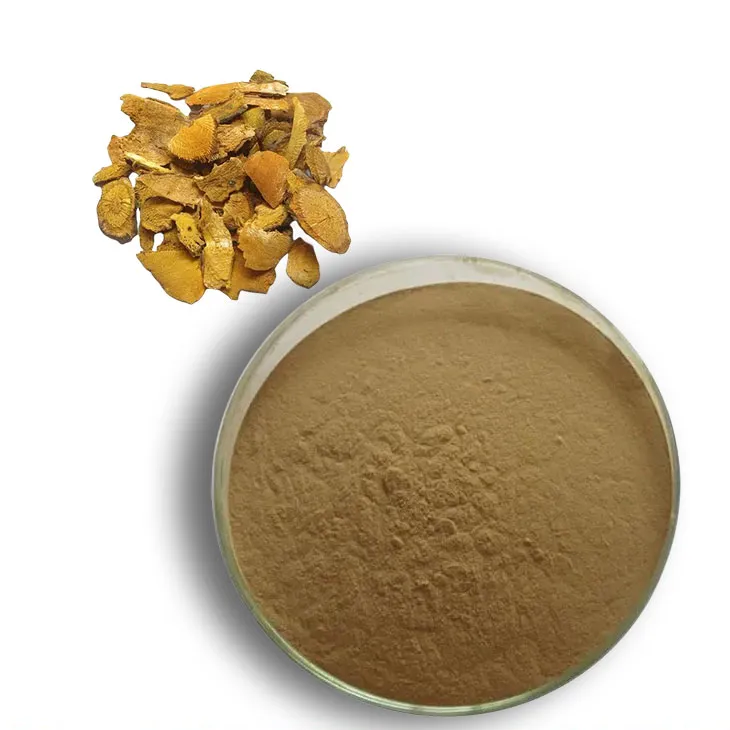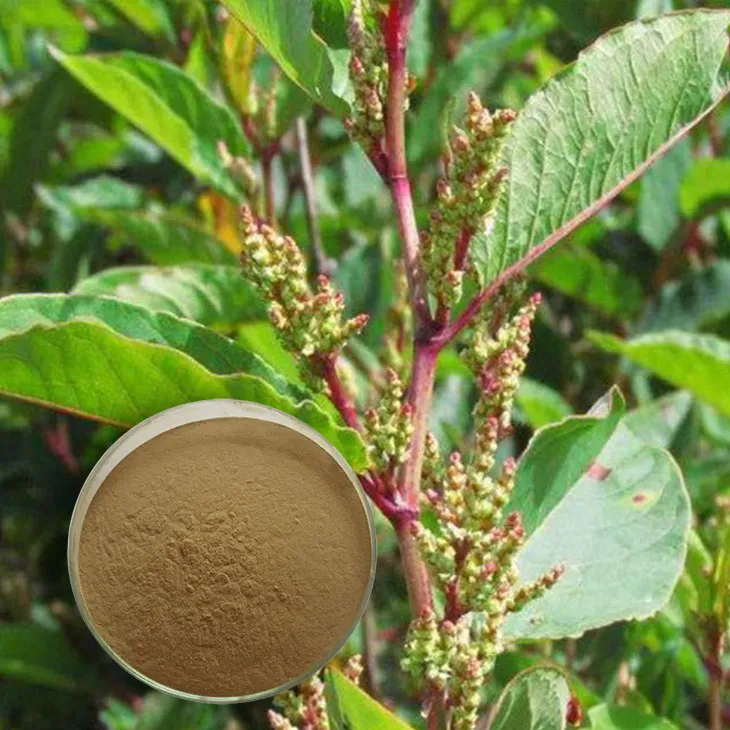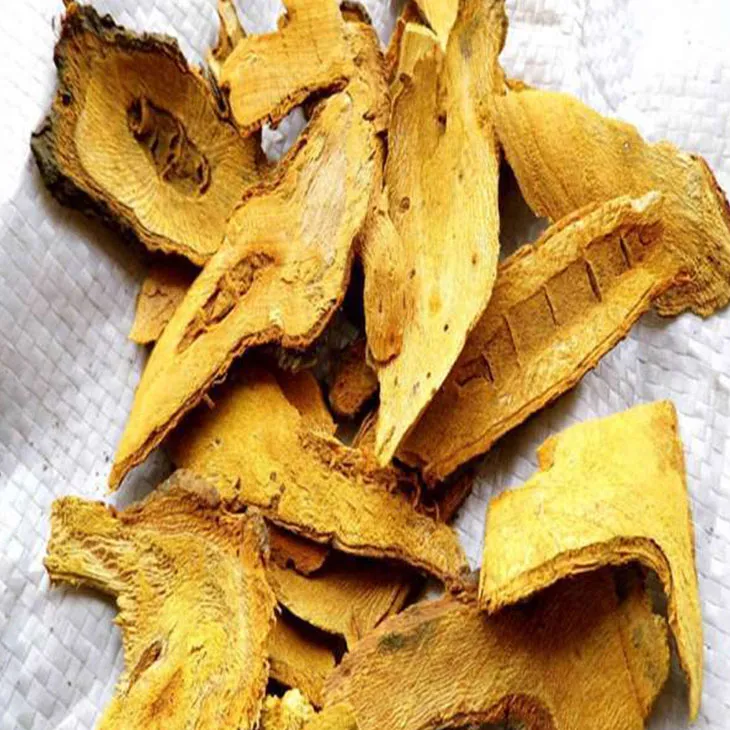- 0086-571-85302990
- sales@greenskybio.com
The process of extracting polydatin and resveratrol from polygonum cuspidatum extract.
2024-11-30

1. Introduction
Polygonum cuspidatum, also known as Japanese knotweed, is a plant rich in various bioactive compounds, among which resveratrol has attracted significant attention in recent years. Resveratrol is a polyphenolic compound with potential health - benefits, including antioxidant, anti - inflammatory, and anti - cancer properties. Extracting resveratrol from Polygonum Cuspidatum Extract is a complex process that involves multiple steps and considerations. This article aims to provide a comprehensive analysis of this extraction process, from the initial harvesting of the plant to the final refined product.

2. Harvesting of Polygonum cuspidatum
2.1. Optimal Harvesting Time
The timing of harvesting Polygonum cuspidatum is crucial for obtaining high - quality extracts rich in resveratrol. Generally, the plant is harvested when it reaches a certain growth stage. For example, in late summer or early fall, the concentration of resveratrol in the plant may be relatively high. This is because during this period, the plant is likely to be exposed to more environmental stresses, such as changes in temperature and sunlight, which can stimulate the biosynthesis of resveratrol.
2.2. Harvesting Methods
When harvesting Polygonum cuspidatum, proper methods should be adopted to ensure the integrity of the plant material. Manual harvesting is often preferred to avoid excessive damage to the plant. Workers can use tools such as scissors or pruning shears to cut the stems and leaves of the plant at an appropriate height. Additionally, it is important to select healthy plants for harvesting to ensure the quality of the extract.

3. Pretreatment of the Plant Material
3.1. Cleaning
After harvesting, the plant material needs to be thoroughly cleaned. This step is essential to remove dirt, debris, and other contaminants that may be present on the surface of the plant. The plant can be washed with clean water several times until the water runs clear. Any damaged or diseased parts should also be removed during the cleaning process.
3.2. Drying
Drying is another important pretreatment step. There are different drying methods available, such as air - drying, oven - drying, and freeze - drying. Air - drying is a simple and cost - effective method, but it may take a longer time. Oven - drying can speed up the process, but the temperature needs to be carefully controlled to avoid over - drying or degradation of the bioactive compounds. Freeze - drying is a more advanced method that can better preserve the structure and activity of the compounds, but it is also more expensive. In general, the dried plant material should be stored in a dry and cool place until further extraction.

4. Extraction Routes
4.1. Solvent Extraction
Solvent extraction is one of the most commonly used methods for extracting resveratrol from Polygonum cuspidatum. Different solvents can be used, such as ethanol, methanol, and ethyl acetate.
- Ethanol is a popular choice due to its relatively low toxicity and good solubility for resveratrol. In the extraction process, the dried plant material is usually soaked in ethanol solution for a certain period of time, and then the mixture is filtered to obtain the extract containing resveratrol.
- Methanol can also be used, but it is more toxic than ethanol, so special safety precautions need to be taken during the extraction process.
- Ethyl acetate has a good selectivity for Resveratrol extraction, but it is less polar than ethanol and methanol, which may affect the extraction efficiency.
4.2. Supercritical Fluid Extraction
Supercritical fluid extraction (SFE) is an emerging and more environmentally friendly extraction method. Carbon dioxide is often used as the supercritical fluid. In the supercritical state, carbon dioxide has properties similar to both a gas and a liquid, which allows it to penetrate the plant material effectively and extract resveratrol. The main advantages of SFE include high extraction efficiency, no residue of toxic solvents, and better preservation of the bioactive properties of resveratrol. However, the equipment for SFE is relatively expensive, which limits its widespread application.
5. Associated Challenges and Solutions
5.1. Low Extraction Yield
One of the main challenges in Resveratrol extraction is the relatively low extraction yield. This may be due to various factors, such as the nature of the plant material, the choice of extraction method, and the extraction conditions.
- To improve the extraction yield, optimization of the extraction parameters is necessary. For example, in solvent extraction, adjusting the solvent concentration, extraction time, and extraction temperature can have a significant impact on the yield. Increasing the solvent concentration within a certain range may increase the solubility of resveratrol and thus improve the yield. Similarly, extending the extraction time and increasing the extraction temperature (within the appropriate range) can also enhance the extraction efficiency.
- Another approach is to use pre - treatment techniques to modify the plant material. For example, cell - wall - breaking techniques such as ultrasonic treatment or microwave - assisted extraction can be used to break down the cell walls of the plant material, making it easier for the solvent to access the resveratrol inside the cells and thereby increasing the extraction yield.
5.2. Co - extraction of Impurities
During the extraction process, other compounds in Polygonum cuspidatum may be co - extracted along with resveratrol, which can affect the purity of the final product.
- To solve this problem, purification steps are required after extraction. Chromatographic techniques such as column chromatography can be used to separate resveratrol from other impurities. In column chromatography, a stationary phase and a mobile phase are used. Resveratrol and other compounds will have different affinities for the stationary phase, allowing them to be separated as they move through the column with the mobile phase.
- Another method is crystallization. By adjusting the conditions such as temperature and solvent composition, resveratrol can be crystallized out from the extract, leaving behind the impurities in the solution.
6. Potential Applications of Extracted Resveratrol
6.1. In the Pharmaceutical Industry
Resveratrol has shown great potential in the pharmaceutical industry. Its antioxidant and anti - inflammatory properties make it a candidate for the development of drugs for the treatment of various diseases, such as cardiovascular diseases, neurodegenerative diseases, and cancer.
- In the case of cardiovascular diseases, resveratrol may help reduce oxidative stress, improve endothelial function, and lower blood pressure. Pre - clinical studies have shown promising results, and further clinical trials are being carried out to evaluate its efficacy and safety.
- For neurodegenerative diseases such as Alzheimer's and Parkinson's, resveratrol may play a role in protecting neurons from damage by reducing oxidative stress and inflammation. Although more research is needed to fully understand its mechanisms and potential therapeutic effects, it has attracted significant attention in the field of neurodegenerative disease research.
- In cancer research, resveratrol has been shown to have anti - proliferative and apoptotic effects on cancer cells in vitro. However, translating these findings into effective cancer treatments in vivo is still a challenge, and more research is required to explore its potential in combination with other anti - cancer drugs or therapies.
6.2. In the Cosmetic Industry
Resveratrol is also widely used in the cosmetic industry. Its antioxidant properties make it an excellent ingredient for anti - aging products. It can help protect the skin from damage caused by free radicals, such as UV radiation and environmental pollutants, and thus reduce the appearance of wrinkles, improve skin elasticity, and promote skin health.
7. Importance of Sustainable and Efficient Extraction Methods
As the demand for resveratrol continues to grow, it is essential to develop sustainable and efficient extraction methods. Sustainable extraction methods can ensure the long - term availability of Polygonum cuspidatum resources and reduce the impact on the environment. For example, using environmentally friendly solvents in solvent extraction or promoting the use of supercritical fluid extraction can help reduce the emission of harmful substances. Efficient extraction methods can improve the yield and quality of resveratrol, which is beneficial for both the economic and scientific aspects of the extraction process. By optimizing the extraction parameters and using advanced extraction techniques, we can achieve higher extraction yields with lower costs and less waste.
8. Conclusion
The extraction of resveratrol from Polygonum Cuspidatum Extract is a complex but important process. From the harvesting of the plant to the final application of the extracted resveratrol, each step requires careful consideration and optimization. By addressing the challenges associated with extraction, such as low yield and impurity co - extraction, and by developing sustainable and efficient extraction methods, we can better utilize the potential of resveratrol in various fields, including pharmaceuticals and cosmetics. Future research should focus on further improving extraction techniques, exploring new applications of resveratrol, and promoting the sustainable development of the entire extraction process.
FAQ:
What are the main extraction methods for resveratrol from Polygonum Cuspidatum Extract?
There are several common extraction methods. One is solvent extraction, which often uses organic solvents like ethanol. Another method is supercritical fluid extraction. Solvent extraction is relatively straightforward but may require subsequent purification steps to remove the solvent residues. Supercritical fluid extraction, typically using carbon dioxide, offers advantages such as being more environmentally friendly and producing a purer product, but it requires more specialized equipment.
What are the challenges in the extraction process of resveratrol from Polygonum cuspidatum?
One challenge is the low content of resveratrol in Polygonum cuspidatum, which means large amounts of raw materials may be needed to obtain a significant quantity of resveratrol. Another issue is the co - extraction of other compounds. Since Polygonum cuspidatum contains various substances, during extraction, other compounds may be extracted along with resveratrol, which can complicate the purification process. Also, ensuring the stability of resveratrol during extraction is a concern, as it can be degraded under certain conditions.
How can the purity of Resveratrol extracted from Polygonum cuspidatum be improved?
After the initial extraction, purification techniques can be applied. Chromatography methods, such as column chromatography, can be effective in separating resveratrol from other co - extracted compounds. Recrystallization is another option, which can help in obtaining a more pure form of resveratrol. Additionally, optimizing the extraction conditions, such as the choice of solvent, extraction time, and temperature, can also contribute to higher purity by reducing the extraction of unwanted substances.
What are the potential applications of resveratrol extracted from Polygonum cuspidatum?
Resveratrol has potential applications in the pharmaceutical and nutraceutical fields. In pharmaceuticals, it has shown antioxidant, anti - inflammatory, and anti - cancer properties in some studies. In the nutraceutical area, it can be used as a dietary supplement due to its potential health - promoting effects. It may also have applications in the cosmetic industry for its antioxidant properties, which can help in anti - aging formulations.
Why is sustainable extraction of resveratrol from Polygonum cuspidatum important?
Sustainable extraction is crucial for several reasons. Firstly, it helps to protect the natural resources of Polygonum cuspidatum. Over - harvesting can lead to the depletion of this plant species. Secondly, sustainable extraction methods are often more environmentally friendly, reducing the impact on the ecosystem. For example, using non - toxic solvents or minimizing waste generation during extraction. Also, sustainable extraction can ensure the long - term availability of resveratrol for various applications.
Related literature
- Optimization of Resveratrol Extraction from Polygonum cuspidatum by Response Surface Methodology"
- "Comparative Study of Different Extraction Methods for Resveratrol from Polygonum cuspidatum"
- "The Bioactivity and Potential Applications of Resveratrol Extracted from Polygonum cuspidatum"
- ▶ Hesperidin
- ▶ citrus bioflavonoids
- ▶ plant extract
- ▶ lycopene
- ▶ Diosmin
- ▶ Grape seed extract
- ▶ Sea buckthorn Juice Powder
- ▶ Beetroot powder
- ▶ Hops Extract
- ▶ Artichoke Extract
- ▶ Reishi mushroom extract
- ▶ Astaxanthin
- ▶ Green Tea Extract
- ▶ Curcumin Extract
- ▶ Horse Chestnut Extract
- ▶ Other Problems
- ▶ Boswellia Serrata Extract
- ▶ Resveratrol Extract
- ▶ Marigold Extract
- ▶ Grape Leaf Extract
- ▶ blog3
- ▶ blog4
-
The best aged garlic extract on the market.
2024-11-30
-
How to make powder with L - arginine.
2024-11-30
-
Certified organic hawthorn extract.
2024-11-30
-
Bulk purchase of mulberry leaf extract.
2024-11-30
-
Wholesale Suppliers of Eyebright Extract.
2024-11-30
-
Certified organic jujube extract.
2024-11-30
-
Almond Extract Powder
2024-11-30
-
Gynostemma pentaphyllum extract
2024-11-30
-
Black Pepper Extract
2024-11-30
-
Nettle leaf extract
2024-11-30
-
Sugarcane Extract
2024-11-30
-
Citrus bioflavonoids
2024-11-30
-
Alisma Extract
2024-11-30
-
White Peony Extract
2024-11-30
-
Red Date Extract
2024-11-30
-
Hesperidin
2024-11-30





















